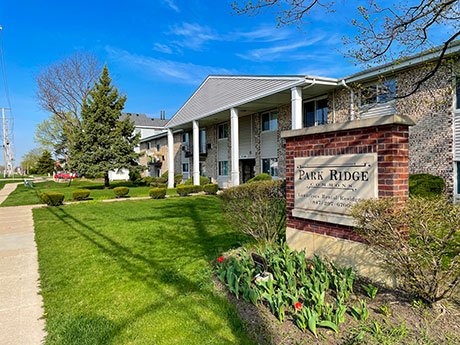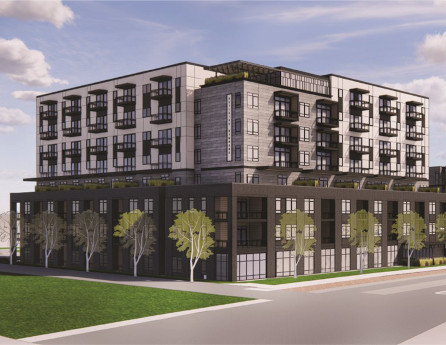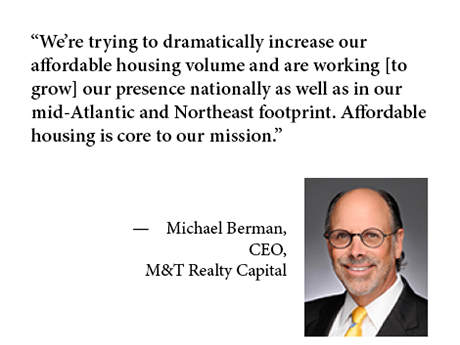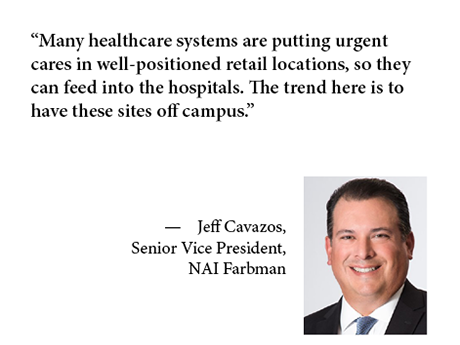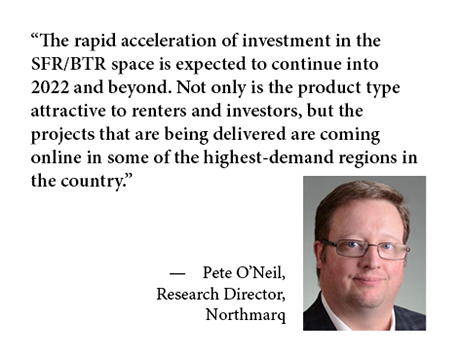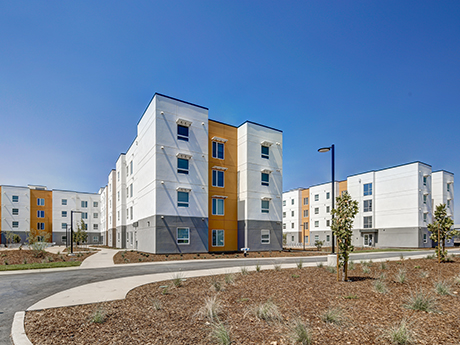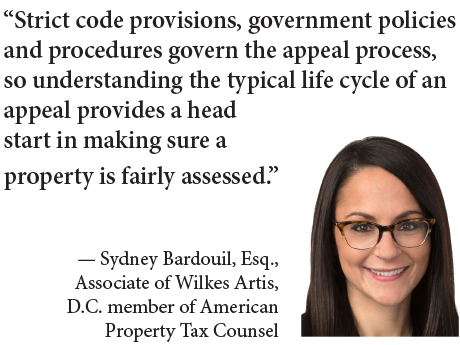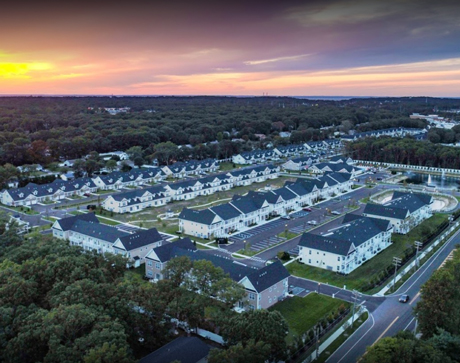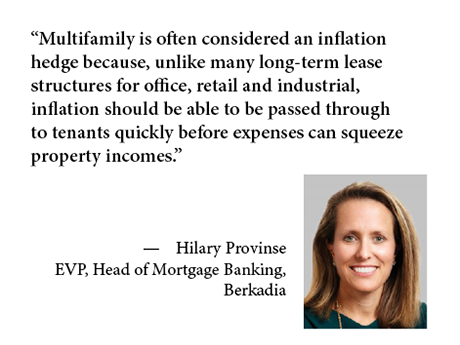While 2021 was a record year for multifamily investment sales, brokers see no sign of a slowdown. Some dealmakers anticipate that 2022 could be an even bigger year. In 2021, U.S. multifamily property and portfolio sales nationally totaled $335.3 billion, up 128 percent over the prior year, according to Real Capital Analytics. In 2021, Chicago-based Interra Realty sold or put under contract more than $527 million of apartment properties on behalf of clients, representing just under 3,000 units. Brad Feldman, senior managing partner, says that while some of those transactions carried into 2022, the total amount sold or under contract so far this year is more than 83 percent of the 2021 sales total. In one particular deal in 2021, Feldman represented a family trust in its sale of a Chicago multifamily property for the first time in 50 years. Situated in the city’s Lakeview neighborhood, the building features 21 apartment units and two commercial spaces. A private buyer paid $5.2 million for the asset and plans to renovate the units, hallways and common areas. Feldman completed about 30 showings and received more than six written offers. While today’s market tends to favor sellers, both sides of the transaction are …
Features
ANNAPOLIS, Md. — Demand for seniors housing hit an all-time high in the second half of 2021, signifying continued growth out of the depths of the effects of the COVID-19 pandemic, according to the National Investment Center for Seniors Housing & Care (NIC). The analysis came in the form of a blog post by Beth Mace, NIC’s chief economist. NIC is an Annapolis-based nonprofit firm that tracks industry data gathered from 31 primary metropolitan markets through its NIC MAP Vision product. The demand was measured by absorption, with the market absorbing 21,029 units in the third and fourth quarter of 2021. “Notably, this is a clear reversal in trend from the loss of 42,129 units during the pandemic in the second, third and fourth quarters of 2020 and the first quarter of 2021,” wrote Mace. The post listed five major takeaways from the fourth-quarter 2021 data, the first of which is that occupancy has recovered 230 basis points from the low point of the pandemic, from 78.7 percent in the second quarter of 2021 to 81 percent in the fourth quarter of 2021. However, it remains 640 basis points below its pre-pandemic level of 87.4 percent. Mace noted, though, that …
M&T Realty Capital Corp. is beginning 2022 with ambitious plans to increase its multifamily financings as part of an effort to double its real estate loan volume over the next two to three years. To achieve those goals, it is leveraging a new leadership structure and a recently announced strategic partnership with the Marcus & Millichap Capital Corp. M&T Realty Capital, M&T Bank’s commercial mortgage banking subsidiary, recorded $5.1 billion in loan volume in 2021, a level that was just below its high watermark of $5.2 billion in 2019, says Michael Berman, CEO of M&T Realty Capital. Multifamily loans made up of the lion’s share of financings, he adds, and the sector provides a significant growth opportunity going forward. “Multifamily is a hot a sector right now — everyone is trying to invest in it,” he says. “It’s just an extraordinarily healthy asset class because of its supply and demand dynamics.” Indeed, the U.S. apartment market enjoyed a banner year in 2021 across all measures. Investment volume reached a record $335.3 billion, nearly 75 percent above the record volume of $193.1 billion posted in 2019, according to commercial real estate brokerage CBRE. Meanwhile, renters absorbed 617,500 apartment units in 2021, …
The famed stability of healthcare and medical office building (MOB) real estate continues in 2022, with the Midwest acting as a microcosm for the sector’s trends and challenges nationwide. Adapting to complement large healthcare system needs, adding urgent care centers and keeping costs low are some of the main concerns for brokers this space. Five healthcare/MOB brokers sat down with REBusinessOnline to discuss what is influencing the sector. Michael Kalil, chief operating officer and director of brokerage, and Jeff Cavazos, senior vice president, NAI Farbman, Southfield, Mich.; Matthew Gregory, senior VP office brokerage, and Michael Simpson, president, NAI Ohio Equities, Columbus, Ohio; and Doug Taatjes, partner/associate broker, NAI Wisinski of West Michigan, Grand Rapids, Mich. weighed in on the present and future of healthcare/MOB real estate. REBusiness: What trends are we going to see in healthcare in 2022? What factors might influence further investment in this field? Matt Gregory: Improvements to building infrastructure will be the most significant trend in 2022. There will be a push toward better HVAC filtration, higher cleaning standards and so forth. Mike Simpson: Yes, I think the healthy building initiative is something that’s going to pick up more momentum this year. Doug Taatjes: In our …
Build-to-RentContent PartnerFeaturesLeasing ActivityMidwestMultifamilyNortheastNorthmarqSingle-Family RentalSoutheastTexasWestern
Single-Family/Build-to-Rent: Changing Renter Demographics Fuel Growth
Demand for all forms of housing has been on the rise in recent years, a trend that is expected to continue in 2022. One segment of the market that is attracting significant attention is single-family/build-to-rent (SFR/BTR), as a series of economic and demographic shifts increase the attractiveness of an alternative to traditional apartments. Developers are ramping up activity on thousands of new units, particularly in the high-growth southern U.S. markets. Dozens of projects totaling more than $1.5 billion sold in 2021. Meanwhile, billions of dollars of debt and equity capital continue to move into this increasingly attractive investment class. Northmarq’s National Multifamily 2022 Outlook covers the record-setting momentum that multifamily properties across the United States saw last year and projects what the market may see in 2022. Northmarq’s full report is available here (with further rundowns on factors like the overall economy, rent trends, the investment market and financing climate). Their analysis on the SFR/BTR market below breaks down the trends and opportunities for growth in this burgeoning sector. Reasons for Growth Several factors are prompting the development of SFR/BTR. A primary influence is the changing mix of renters; today’s renters are generally older and more affluent than in the past. These …
Colleges, Universities Look More to Public-Private Partnerships for Student Housing Projects Post-Pandemic
by Katie Sloan
The pandemic isn’t entirely behind us yet, but many colleges and universities see the writing on the wall when it comes to funding future on-campus housing projects. Tighter budgets, more privacy, possible future closures, and nearly two years of delayed, deferred or canceled projects have driven a wedge between what establishments need to offer their students to remain competitive and what they have to work with. Enter public-private partnerships (P3). These arrangements between private investment firms and public universities have been bridging the funding gap for nearly 20 years. In a post-COVID world, however, their presence isn’t just appreciated, it’s vital in many instances. “COVID has shown how important P3 relationships are for institutions facing budget cuts and higher costs,” says Michael Leonczyk, director at Chicago-based Harrison Street. “There is a growing acceptance of P3s as a critical vehicle to allow higher education institutions to stay on the cutting edge when it comes to retaining and attracting students and ensuring they have access to resources that facilitate their academic and social lives. This includes housing, dining, parking, energy, water and athletics.” In 2003, there were three higher education P3 transactions, which totaled $100 million. By 2016, this number had swelled …
In the District of Columbia, a prudent taxpayer must observe important steps and deadlines to appeal a real property tax assessment. Strict code provisions, government policies and procedures govern the appeal process, so understanding the typical life cycle of an appeal provides a head start in making sure a property is fairly assessed. Here is a look at what to expect as a case advances: Assessment and Notification Assessors reassess all real property in the District each year using a Jan. 1 valuation date that precedes the start of that tax year. For example, Tax Year 2023 runs from Oct. 1, 2022 through Sept. 30, 2023. Thus, corresponding assessed values are as of Jan. 1, 2022. The District typically will mail assessment values and update the MyTaxDC.gov website on or around March 1 each year, sending its estimate of market value to the owners of more than 205,500 parcels. This will be the taxpayer’s first glimpse of the valuation and potential tax liability for the following tax year. These assessed values are released without supporting documentation, however. To determine how an assessor derived the value, the taxpayer or a duly authorized agent must contact the Office of Tax and Revenue …
COVID-19 has changed many investors’ approaches to the seniors housing sector. The pandemic caused a major shift in who’s buying and who’s selling. Some of the biggest buyers in 2019 were the biggest sellers in 2021. For example, institutional investors went from buying more than $2 billion in 2019 to selling more than $3 billion through the first three quarters of 2021. That’s according to Real Capital Analytics, a New York City-based data firm. The numbers are based on publicly announced deals over $2.5 million. “There still is an element of fear and uncertainty,” says Jim Costello, senior vice president with Real Capital Analytics. “We saw early in the pandemic that some of the management issues resulted in more fatalities. It’s not the problem now that it was then, but that comes with higher costs. More spending has to be done to mitigate the risks involved. That changes the investment opportunities.” These changes have led to a growing bid-ask spread in the marketplace. Buyers aren’t willing to spend as much, knowing that expenses are higher now, but sellers aren’t necessarily willing to reduce prices, says Costello. At least in 2020, this resulted in a massive dip in overall deal volume, …
By Robert Walton, Trimont Real Estate Advisors U.S. lawmakers may be on the cusp of adopting the most far-reaching affordable housing legislation the nation has seen in decades. Despite ongoing discussion of a House-approved spending plan’s overall price tag, congressional leaders hope to forge agreement on FY 2022 appropriations as early as Feb. 18, the end date of a continuing resolution funding the government. Expanded tax credits under a budget agreement could pave the way to creating thousands of additional rental units for households with low and median incomes, helping to address a housing supply gap that has dashed hopes and opportunities for a large and growing segment of the population. Affordable housing initiatives expected in the 2022 federal budget range from an expansion of low-income housing tax credit (LIHTC) allocations to states, to the creation of several new tax credits to incentivize development and rehabilitation of affordable housing in a wider range of product types and income levels. Those could include a middle-income housing tax credit to promote affordable rentals for families with incomes closer to their local median but who struggle to afford median rents. A neighborhood homes tax credit would target development and rehabilitation of affordable single-family …
2021 was an exciting year in the multifamily financing market, and for Berkadia mortgage banking — we originated over $40 billion in volume for our clients across our various lender programs, an increase of 50 percent over our 2020 volumes. Every lender in the market demonstrated a strong appetite for originating loans and increased their holdings of mortgages, which was crucial given that the Federal Housing Finance Agency (FHFA) lowered the caps for Fannie Mae and Freddie Mac to $70 billion each. While the final numbers haven’t been released yet, the Mortgage Bankers Association (MBA) projected the market would originate $578 billion of loans backed by commercial real estate in 2021, a 31 percent increase from 2020 ($442 billion) and just below 2019’s record volume of $601 billion. The fundamentals of the multifamily sector drove unbelievable rent growth, which in turn drove increased investor interest. In 2021, we advised on 762 investment sales transactions, totaling close to $27 billion in volume, a truly record-breaking year for us! This tremendous investor appetite brought about an enhanced need for financing, and often more creative financing. With the government-sponsored enterprises (GSEs) more limited, life companies and commercial banks answered the call, but the …


